Everyday people
After reading the brief of project 2——everyday people,
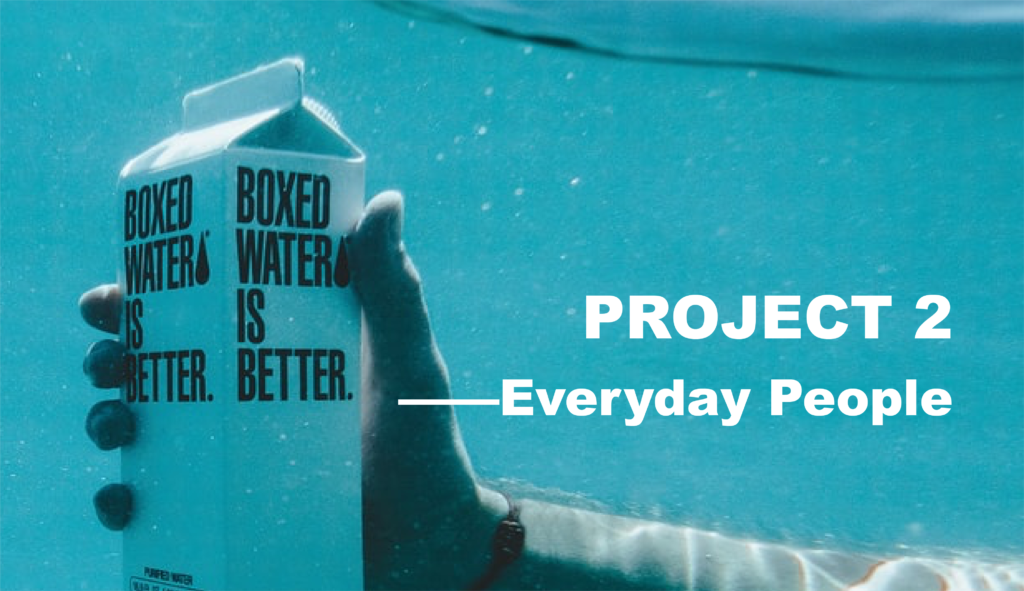
my understanding is that this project requires me to start from my daily life, find problems and conduct research, so I use photos and sketch to record my whole day life and extract several key words.
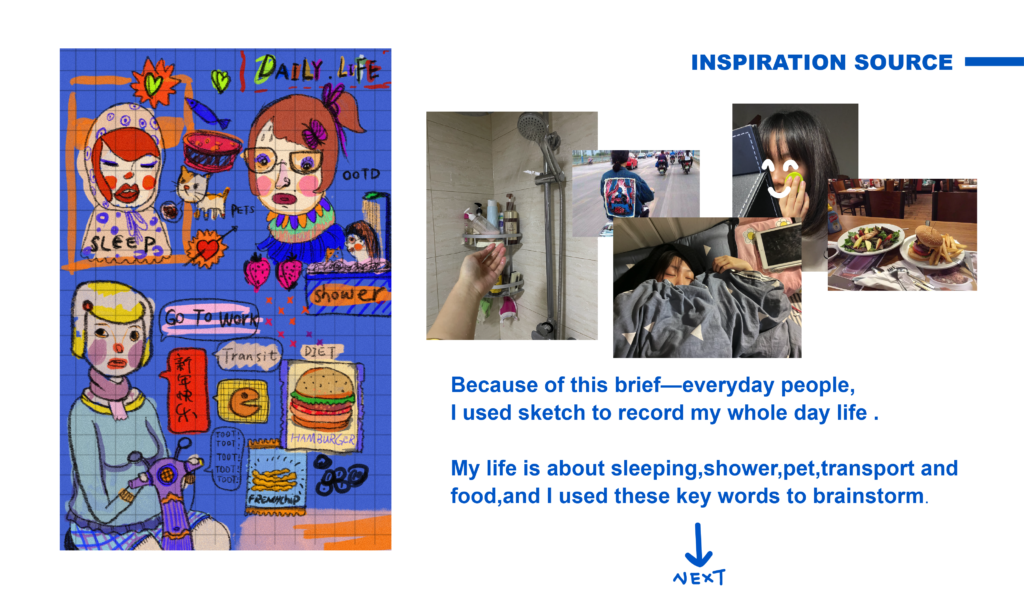
- Mindmap
Next, I drew mindmap according to the key words.

- Painpoint
Through the expansion of all parts of life, I found my pain point.
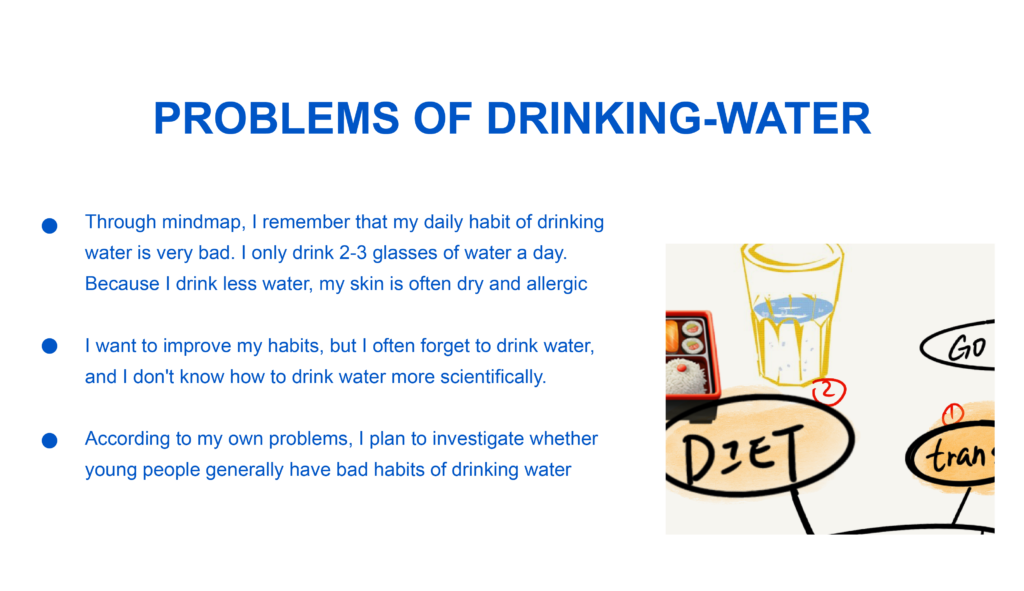
- Next is the beginning of the my topic——problems of drinking water.
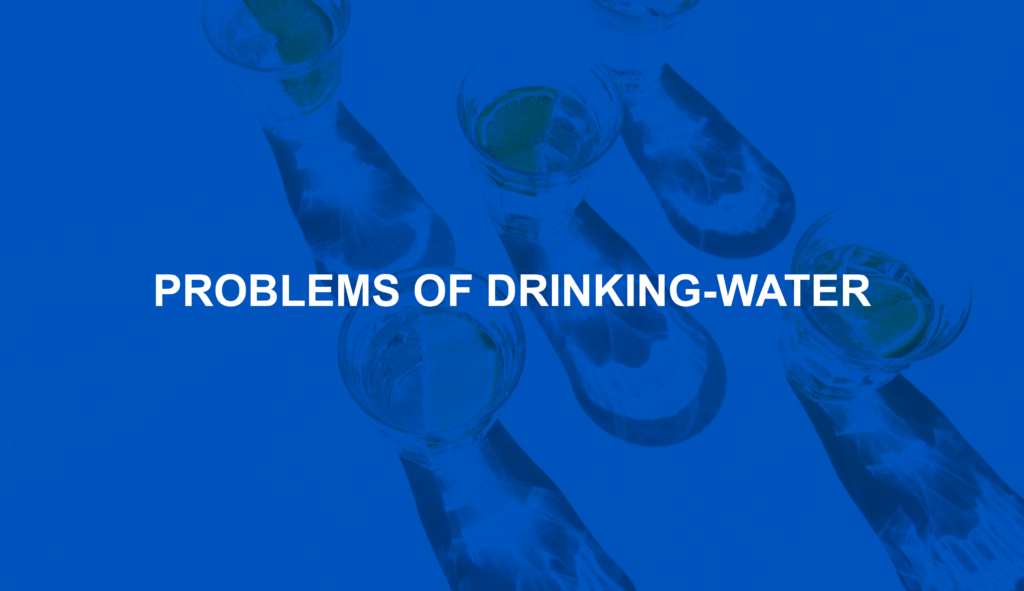
- Background and purpose
After thinking, I listed the background and purpose of my project
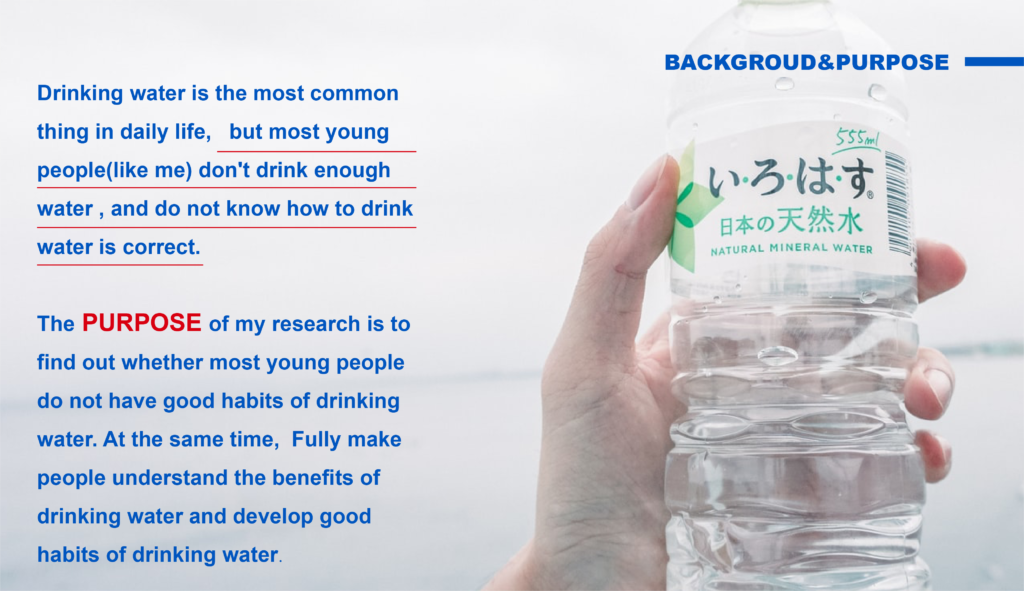
- Asking questions——Establish research direction
Next, I thought about three questions:
1.what is the current situation of people drinking water ;
2.What are the reasons for my research on this topic;
3.Are young people the main group who drink less water?
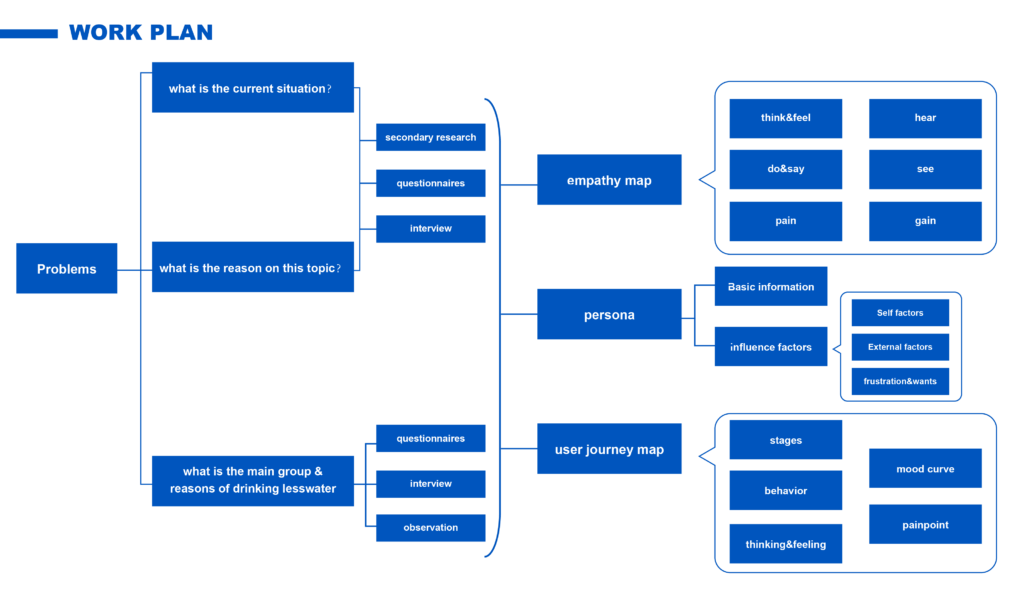
In view of my problems, I began to focus on secondary research materials.
- Current situation
First of all, by solving the first problem, I learned about the current situation of people’s drinking water, found that people generally drink less , drink unhealthily, and most of them have bad habits.
Meanwhile further investigated what occupation gender and age people drink less water.
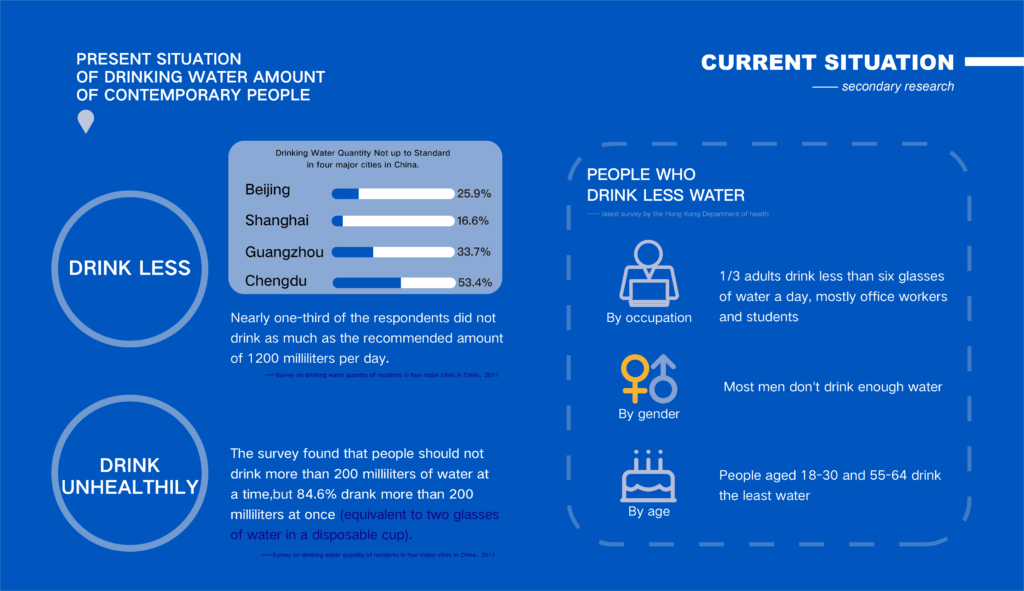
- Reasons of drinking water
Then according to the second question, through my thinking,
drinking water has a lot of benefits, and drinking water can help people keep healthy, which is the main reason why I choose this topic.
So I focus on the advantages of drinking water and the disadvantages of water shortage, which is why people should improve their drinking habits.
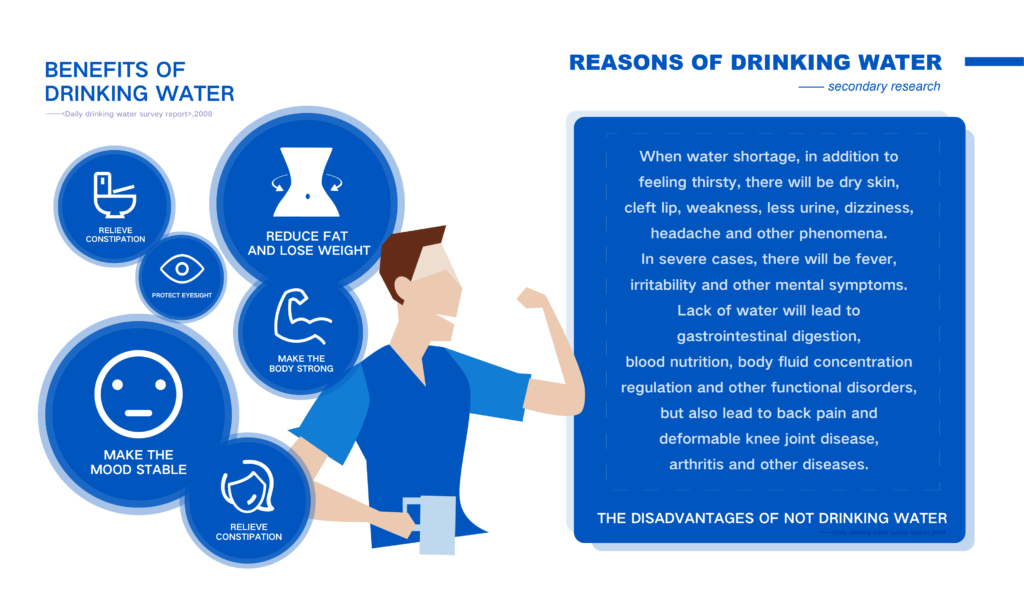
After finishing the secondary research, in order to further solve the third problem and make the research more accurate, I started to do primary research to further understand the users and determine whether young people are the target group.
- Questionnaire
First of all, I conducted a questionnaire survey, and my guess was confirmed by the questionnaire survey – young people were identified as the target group, and they rarely took the initiative to drink water.
Most of them drink water when they are thirsty. However, they knew that they drank very little water, and they wanted to remind themselves to drink water in a planned way, but they all failed.
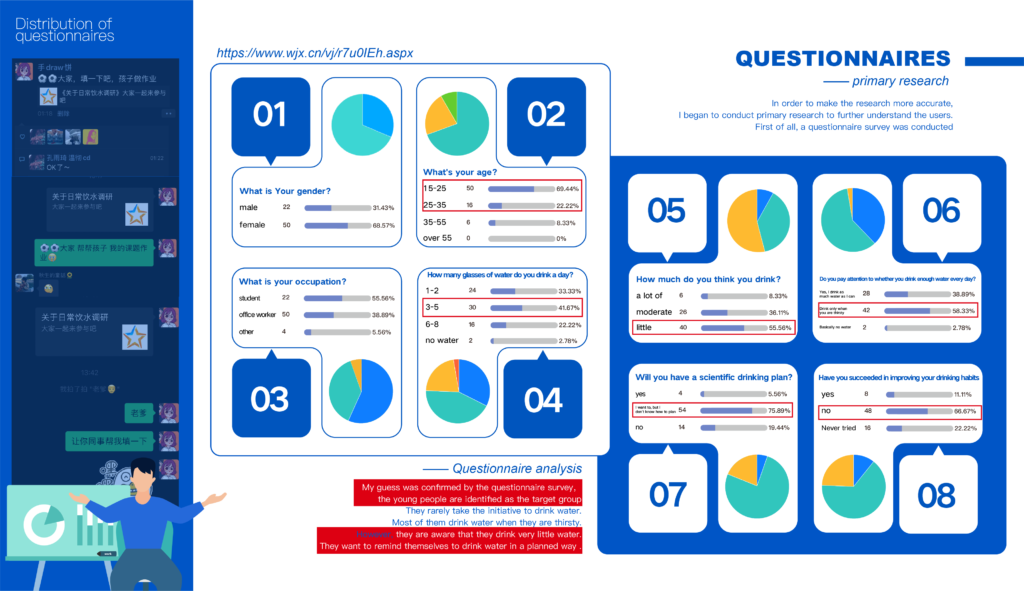
- Interview
Next, in order to further understand the user’s psychology and needs, I conducted an interview and confirmed that busy young people under 35 really drink less water.
They don’t know the right way to drink water and want to improve their habits of drinking water, but they often don’t have time to plan, and they don’t know how to drink water scientifically. From this, I realized their specific needs.
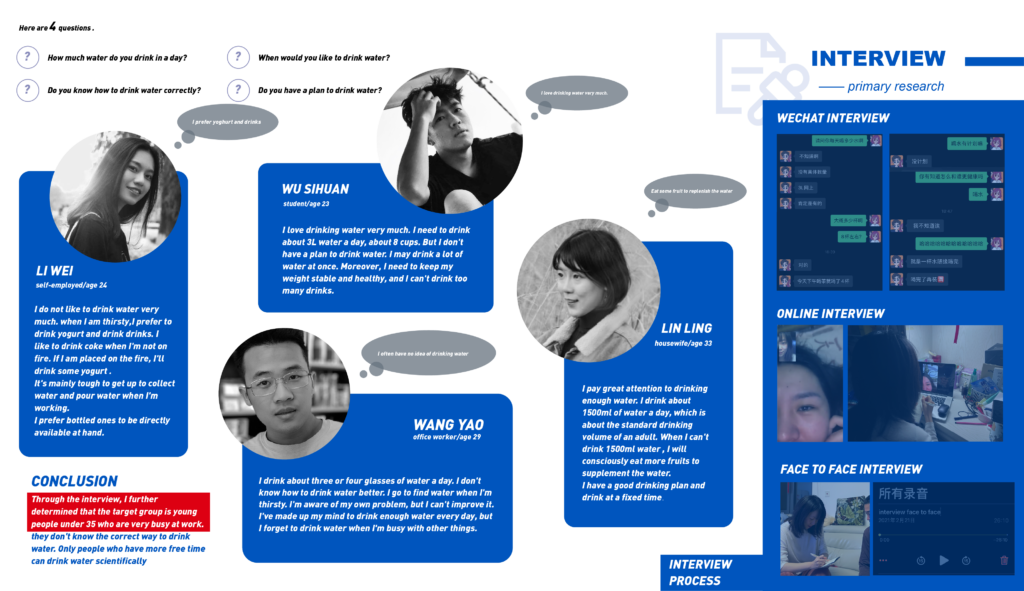
- Observation
Then I wondered if there were any external factors that affected people’s initiative to drink. Therefore, the observation method was used to analyze the drinking environment of the two interviewees before. The interviewees were selected to observe their life because I fully understood their situation and could establish a very clear comparison.
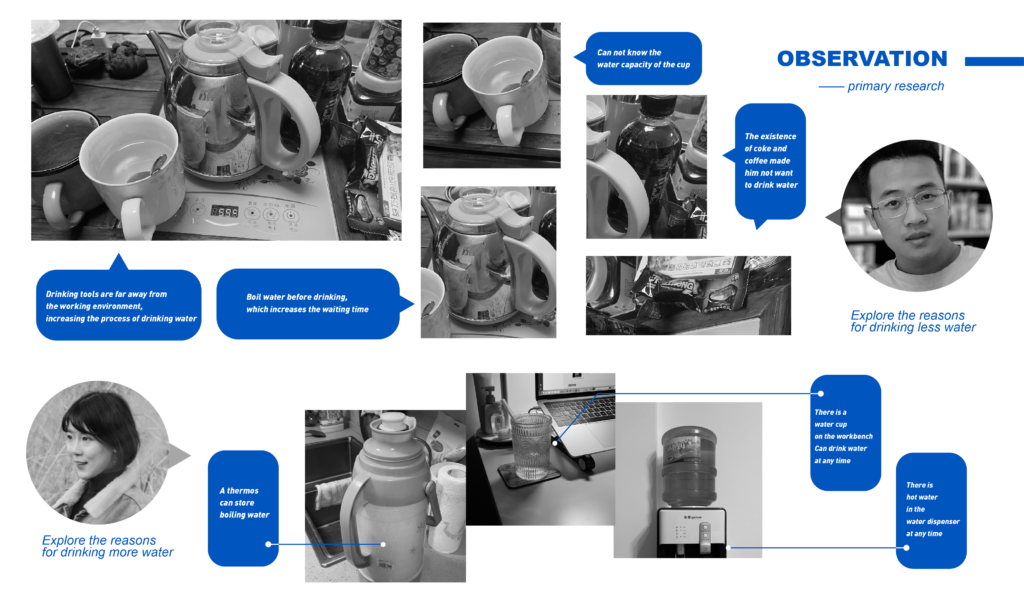
Final work
- Empathy map
Next, based on the results of the previous interview and in-depth thinking, I summarized the thoughts and behaviors of the people who are drinking water into an empathy map
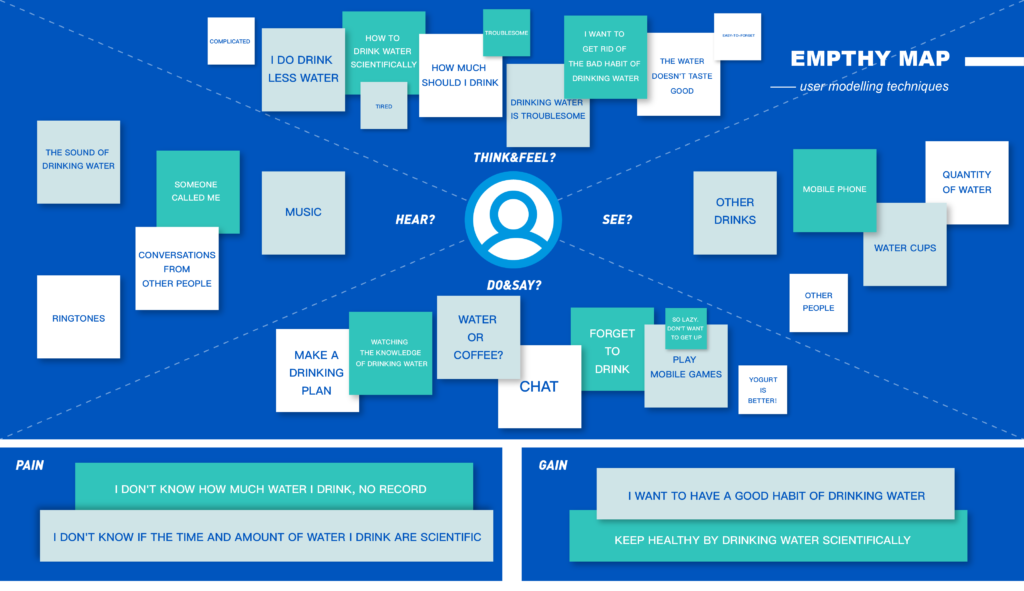
- Persona
After fully understanding the user’s psychology, I made persona. According to the previous research, the target person I describe is a busy young man under 35 years old. At the same time, it shows the internal and external factors that hinder him from forming a good habit of drinking water
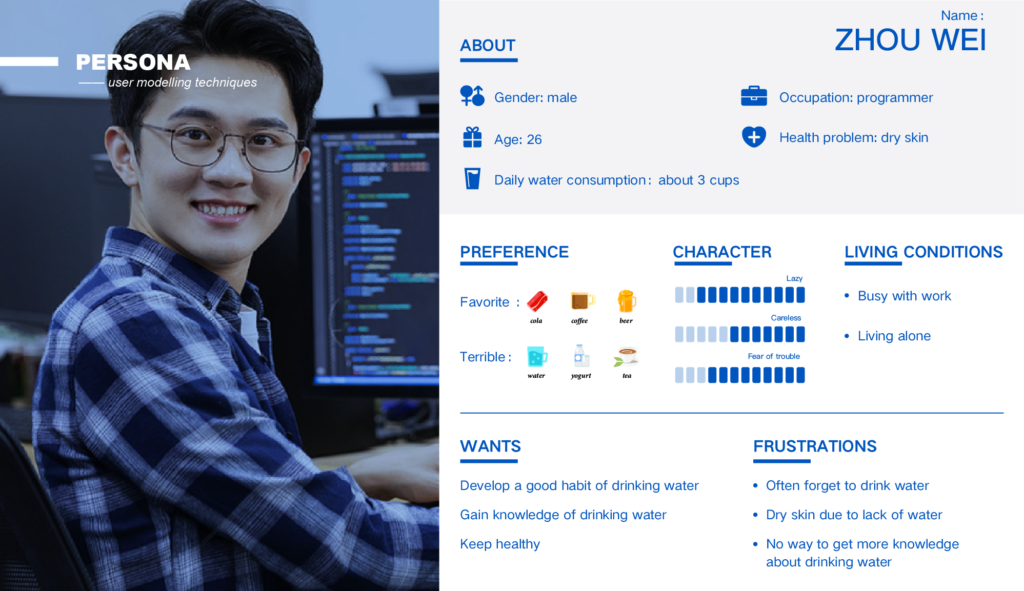
- User journey map
Next, I made a user journey map to fully describe the water drinking process of people who drink less and the emotional changes in the process
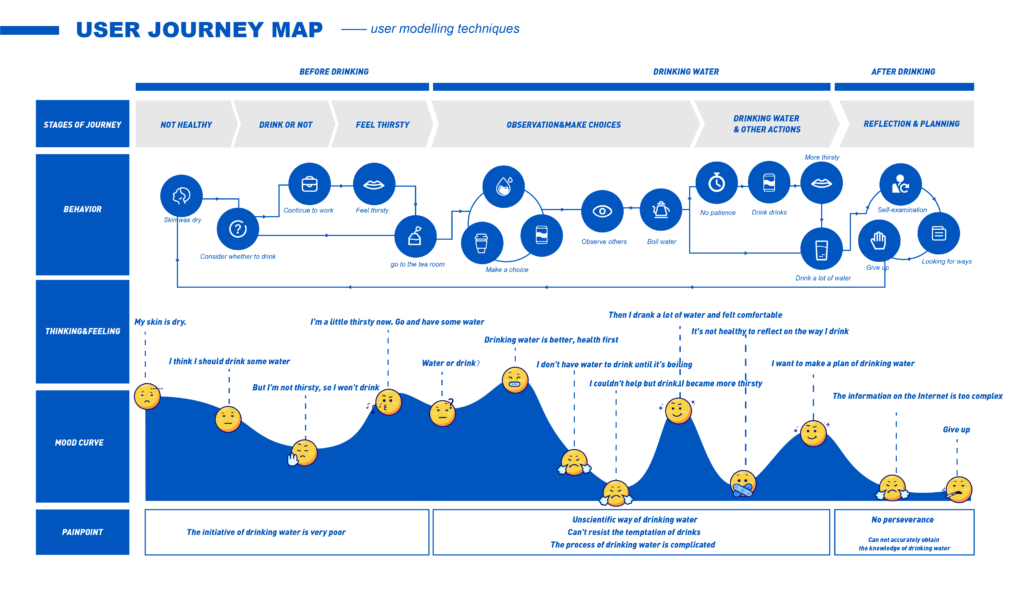
Thanks for reading !
